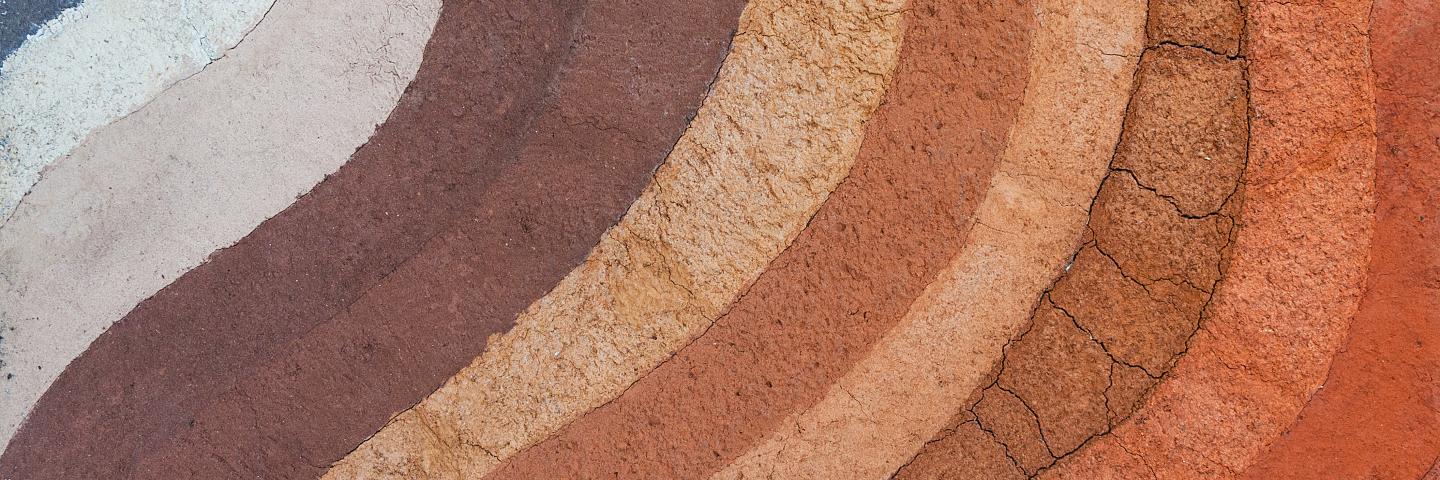
Image via USDA NRCS https://www.nrcs.usda.gov/resources/education-and-teaching-materials/the-twelve-orders-of-soil-taxonomy
Did you know you can learn a lot about your soil quality from looking at its color? Here are some common soil colors and what they reveal about your soil.

Image: Map of soil colors at a depth of 25 cm, via USDA NRCS
Red. Generally, a red soil is rich in iron oxides. Let's break that down. Iron is an essential plant nutrient, but it can be toxic at high levels in acidic conditions (low pH). A soil test will let you know the pH of your soil. As for oxides, an oxidized soil simply indicates a history of being well-drained and not watter-logged or flooded. This is not an issue.
Gray or bluish/greenish. For soil, grayish colors are the opposite of red and show up when soil has been deprived of oxygen regularly by water-logged conditions. This can indicate an area where agriculture will be difficult due to poor drainage.
White/pale. Very light-colored soils can indicate high salt and/or calcium content, common in arid environments. Saline and sodic soils are quite a challenge, but they can be addressed through management. Light soils can also indicate leeching of darker minerals and organic matter deeper into the soil profile, which occurs naturally over time as water repeatedly filters down through the soil bringing these compounds with it.
Black. We usually associate rich, fertile soil with the dark shades caused by high organic matter. You can add organic matter to your soil in many ways, for example compost, mulches, peat moss, or digested manure fertilizer products. However, soil organic matter changes very gradually by taking care of your soil year after year, so there's no quick fix to make your soil darker and more fertile immediately. Soil organic matter accumulates more quickly in wet and/or cold environments compared to dry, warm ones where decomposition happens more quickly.
Lots of these factors combine to give your soil its overall color. So, the best way to know for sure if there are any nutrient deficiencies or toxicities is to do a soil test! The test will also let you know if your pH is imbalanced, and SoilKit will recommend any fertilizers or amendments needed to meet your goals for your soil.

"Three Sisters in Soil" painted with soil by Kirsten Kurtz and team at Cornell University!

Comments
0 comments
Please sign in to leave a comment.